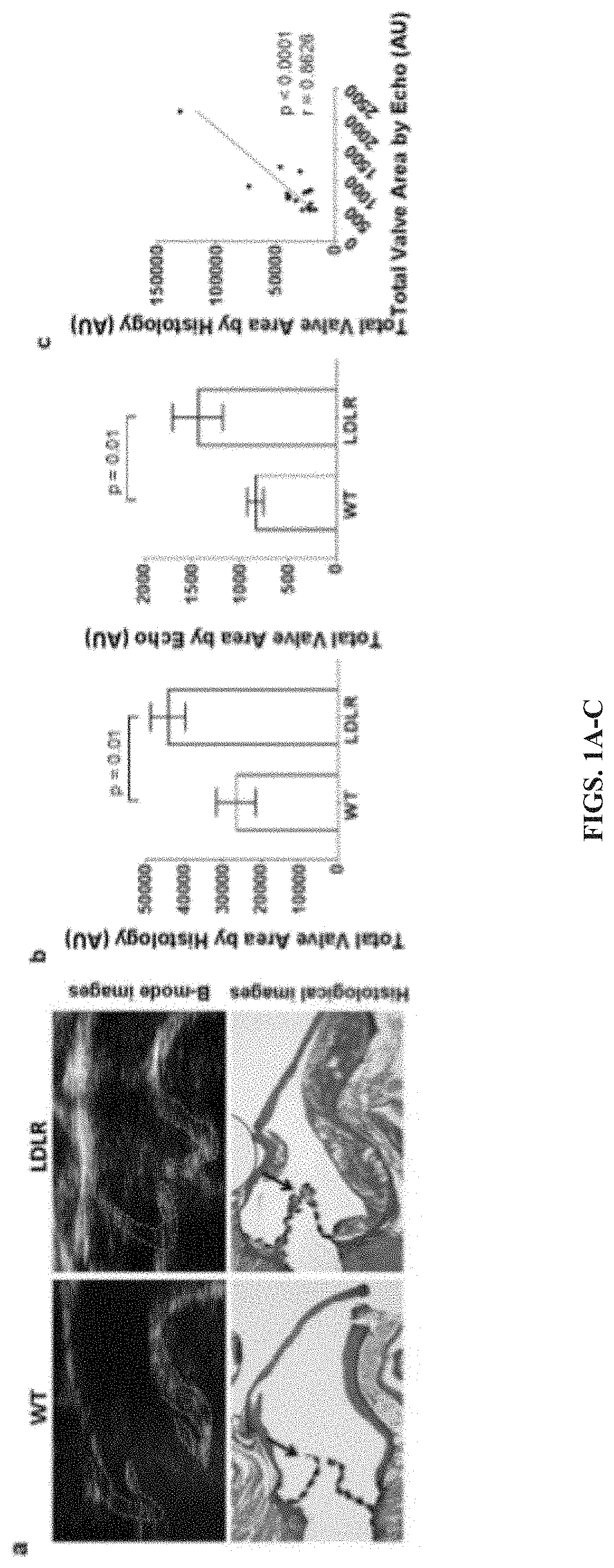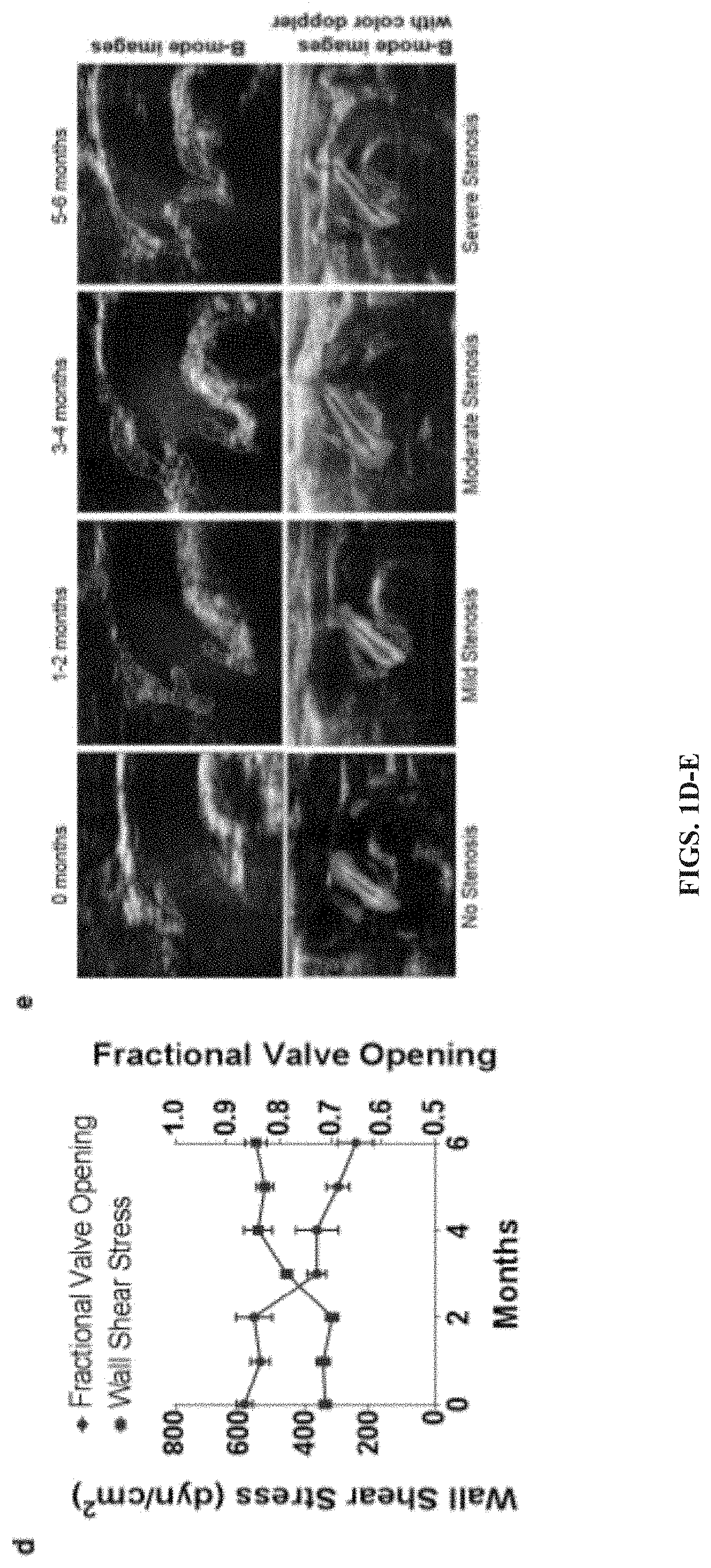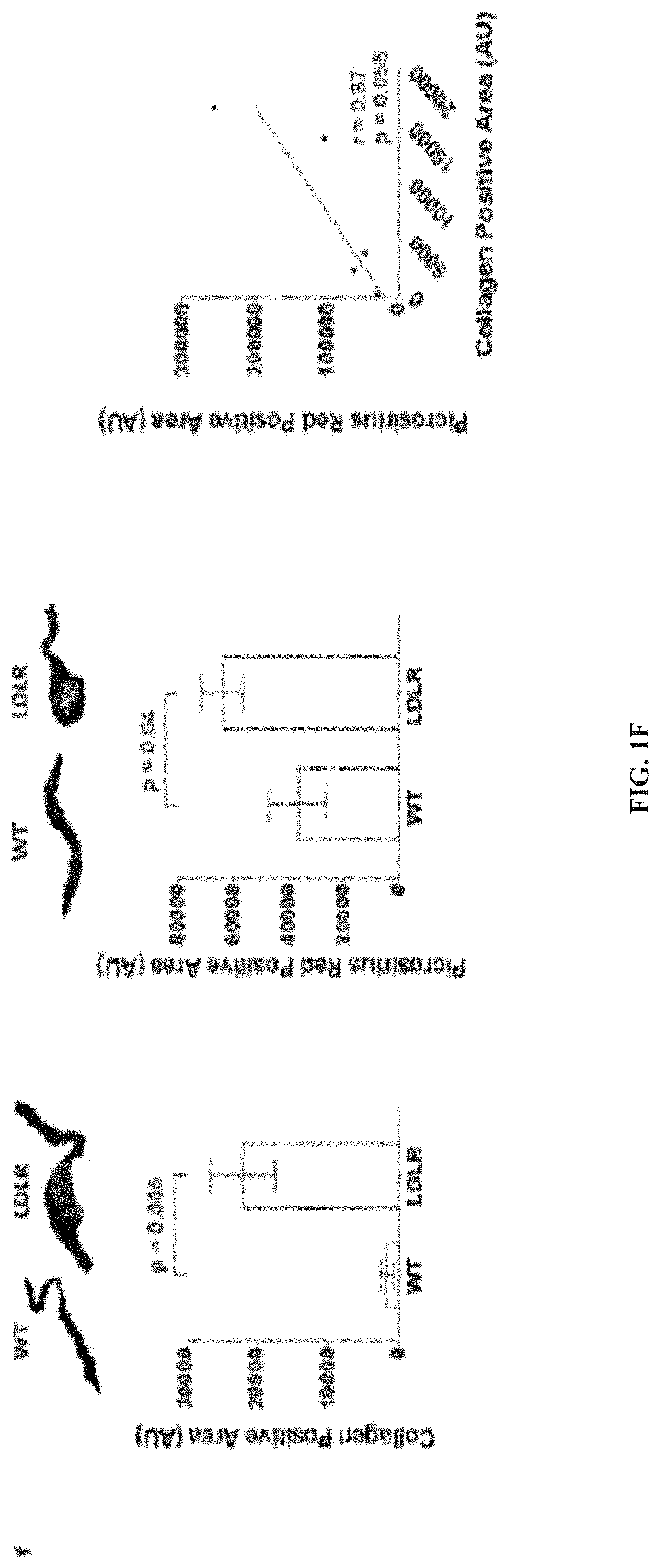N-acetylcysteine attenuates aortic stenosis progression by inhibiting shear-mediated tgf-beta activation and signaling
a technology of n-acetylcysteine and aortic stenosis, which is applied in the field of cardiac disease, hemostasis and thrombosis, fibrosis, developmental biology, biochemistry, etc., can solve the problems of inadequate and insufficient robust preclinical animal models, and achieve the effect of inhibiting tgf- activation and/or
- Summary
- Abstract
- Description
- Claims
- Application Information
AI Technical Summary
Benefits of technology
Problems solved by technology
Method used
Image
Examples
example 1
[0132]Mice. Hypercholesterolemic mice deficient for low-density lipoprotein receptors (Ldlr− / −), which only express ApoB-100 (Ldlr− / −Apob100 / 100, LDLR), were obtained from Jackson Laboratories (B6; 129SLdlrtm1HerApobtm2Sgy / J, stock no. 003000). WT C57bl / 6 mice were also obtained from the Jackson Laboratory (stock no. 000664) and served as controls. TGF-β1platelet-KO-LDLR mice (Pf4Cre+Tgfb1f / f;Ldlr− / −Apob100 / 100;) and TGF-β1flox-LDLR littermate controls (Tgfb1f / f;Ldlr− / −Apob100 / 100) were generated by crossing LDLR mice with Pf4Cre+;Tgfb1f / f mice, as shown in FIGS. 7A-B and Supplemental Table 5. Genotyping and sequencing of megakaryocyte genomic DNA shows that Tgfb1 is inverted in Pf4Cre; Tgfb1ff animals, and depletion of TGF-β1 in platelets was confirmed by ELISA and immunoblotting with TGF-β1-specific antibodies. The inventor crossed Tie2Cre mice (stock no. 008863, Jackson Laboratories) with tdTomato lox-stop-lox mice (stock no. 007909, Jackson Laboratories) to generate Tie2Cre;tdTo...
example 2
[0146]The inventor previously showed that shear stress can activate latent TGF-β1 in vitro (Ahamed et al., 2008). Mice with a targeted deletion of Tgfb1 in their megakaryocytes and platelets are partially protected from developing cardiac hypertrophy, fibrosis, and systolic dysfunction in a pressure overload transverse aorta constriction model of AS (Meyer et al., 2012). Since high shear gradient is observed in AS patients and fibrosis is one of the major hallmarks of AS progression, the inventor hypothesized that platelet-derived TGF-β1 may contribute to AS progression. To test the role of platelet-derived TGF-β1 in AS progression, the inventor first needed to establish an aggressive and robust mouse model that simulates human AS, since only ˜30% of elderly LDLR mice spontaneously develop AS in the present mouse model over a two-year period (Weiss et al., 2006). AS progression in LDLR mice can be accelerated by feeding them a Western Diet (WD) when they are adults (8 to 12 weeks of...
example 3
n
[0159]Here, the inventor has shown that platelet-derived TGF-β1 directly contributes to AS progression in a robust preclinical mouse model of AS, and that pharmacologically or genetically blocking platelet-derived TGF-β1 activity halts AS progression. NAC is a safe, FDA-approved drug used to treat many different conditions (Smilkstein et al., 1988; Marenzi et al., 2006), and its use overcomes the failure of other clinical trials for anti-TGF-β1 therapy due to the pleiotropic nature of TGF-β1 in regulating many physiological functions, including immune function. Moreover, NAC also partially inhibits shear-dependent activation of TGF-β1, presumably by blocking thiol disulfide exchange, a mechanism that has been proposed to contribute to shear-dependent TGF-β1 activation (Ahamed et al., 2008). Thus, compounds such as NAC and / or other thiol-reactive molecules or proteins / peptides may play a regulatory role in the balance between biological and pathological functions of TGF-β1 in which ...
PUM
| Property | Measurement | Unit |
|---|---|---|
| Frequency | aaaaa | aaaaa |
| Fraction | aaaaa | aaaaa |
| Fraction | aaaaa | aaaaa |
Abstract
Description
Claims
Application Information
 Login to View More
Login to View More - R&D
- Intellectual Property
- Life Sciences
- Materials
- Tech Scout
- Unparalleled Data Quality
- Higher Quality Content
- 60% Fewer Hallucinations
Browse by: Latest US Patents, China's latest patents, Technical Efficacy Thesaurus, Application Domain, Technology Topic, Popular Technical Reports.
© 2025 PatSnap. All rights reserved.Legal|Privacy policy|Modern Slavery Act Transparency Statement|Sitemap|About US| Contact US: help@patsnap.com



